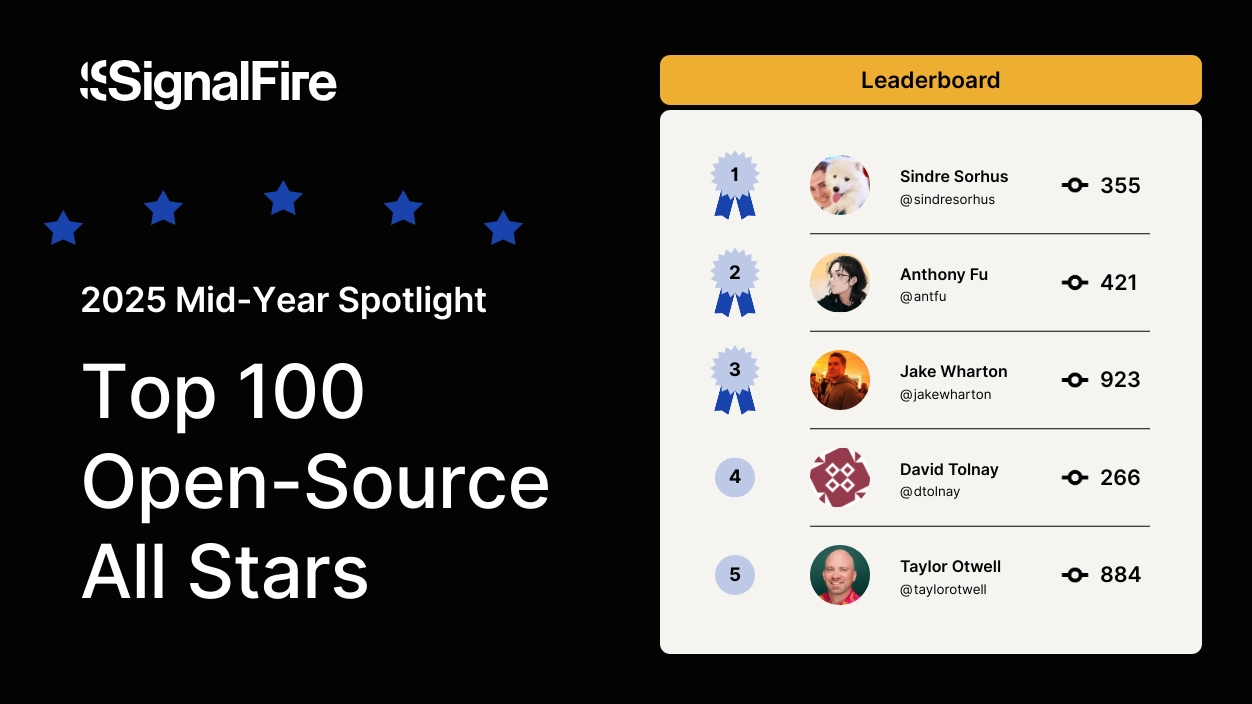
AI is often hailed as a magic solution for all sales challenges, but the reality is more complex. AI works best as a strategic partner for Sales Development Representatives (SDRs). By automating tedious and repetitive tasks, AI frees up SDRs to focus on what truly matters: building meaningful relationships and engaging in valuable conversations with prospects.
We've already integrated AI into our SDR teams to handle two key use cases. Below, we'll share our insights and practical learnings to help you get the most out of these powerful tools
The uncanny valley of AI cold calls
Cold calling is a brutal task. Even for a seasoned SDR, it's a high-volume, low-probability game that requires immense resilience. So, the idea of an AI bot handling this at scale seems like a dream come true. We even tried it at previous companies. The results were…let’s just say “not the best.”
The AI agent only focused on prospects who had given their consent to being contacted. It was a great concept on paper, but in practice, it sounded fake and had a painfully obvious lag. The latency between the prospect's response and the bot's laggy reply created an awkward, stilted conversation that made it obvious they were talking to a machine.
However, we didn't give up. We started tweaking the experience to make it more natural. We added subtle, natural-sounding background noise and even incorporated typing sounds to mimic a real person on the other end of the line. The biggest unlock, though, was recognizing the AI's true role: to make the repetitive dials. Once a prospect showed a flicker of interest, the bot was programmed to transfer them to a human SDR as quickly as possible. This hybrid approach enabled the AI to handle the most tedious, high-rejection calls, allowing our human representatives to focus on conversations that had a higher chance of converting into a sale.
Personalized outreach: Finding the signal in the noise
Email has become less of a channel and more of a battleground in recent years. Reaching someone’s inbox today means fighting through chaos.
Generic, mass-personalized emails that simply swap out a name or company get deleted in a heartbeat. The challenge for an SDR is to cut through this noise with a message that feels genuinely personal and relevant.
This is where AI truly excels. Instead of a tool for just mass email sends, we use it as a powerful research agent. Services like Rox, Unify, and Clay can scour the web for signal-based personalization, such as a recent job change, a funding announcement, or a new product launch. The AI doesn't need to write the email for you; it provides the fuel for a human to write a compelling one.
The workflow is simple yet powerful: An AI research agent gathers the key insights, and the SDR uses that information to craft a multi-channel outreach strategy. The SDR will then write a unique email or draft a personalized LinkedIn message and find the perfect moment to follow up. This human-AI partnership enables the SDR to protect their deliverability and focus their efforts on quality, rather than just quantity.
Your 24/7 digital assistant: The website chatbot
If cold calling is a high-rejection task, then finding ways to answer the same handful of questions from your website visitors is a soul-crushing one. This is the domain of the AI-based chatbot, and it's perhaps the most straightforward and valuable use of AI in sales today.
These chatbots are trained to handle the most common front-line inquiries. They can answer basic questions about product features and pricing, and, most importantly, they can set up meetings directly on a human SDR's calendar. Examples include Drift (now part of Salesloft), Intercom, and Freshchat.
This offloads the most repetitive and low-value work to the chatbot, so your SDRs aren’t spending their time explaining what your company does or when they're free to chat. Instead, they attend a meeting that's already been qualified and scheduled by the bot, allowing them to jump straight into a high-value conversation.
The most successful sales organizations of the future won't be the ones that replace their SDRs with AI. They'll be the ones who empower them with it. By leveraging AI to automate the tedious parts of the job, operators can free up their teams to do what only humans can: connect, empathize, and build the relationships that actually close deals.
How to make AI truly work for your SDR team
To kick things off, be prepared to invest time in a multi-week build:
- Put consent language in place
- Register phone numbers for A2P/brand caller ID
- Wire workflows into Salesforce
- Define the exact fields and dispositions you want logged, etc.
Ongoing operational overhead is somewhere between 4-8 hours weekly across RevOps and enablement:
- QA transcripts
- Tune prompts
- Check error logs
- Review KPIs like the connect rate, show rate, etc.
- Growth/marketing ops may spend another couple of hours monitoring deliverability and branded caller ID health.
The heavier your inbound volume, the more worthwhile this is. It will depend on the specifics of your business. If you have more than 200 inbound demo requests per month and think an AI workflow like this can raise your connect-to-show rates by at least 5%, the system likely pays for itself. Anything below that, and it’s usually cheaper to just coach SDRs more thoroughly and enforce SLA discipline.
TL;DR - Where AI SDR tools shine (and where they don’t)
For those considering an AI-driven workflow, our experience shows it excels in specific, high-stakes scenarios.
What’s working well:
- After-hours and surges in inbound traffic: AI workflows are proving especially valuable during off-peak hours or when inbound leads spike. These are moments when human SDRs often burn out, miss opportunities, or struggle to scale their efforts. AI catches those high-opportunity moments, so no lead sits cold.
- Speed-to-lead matters more than ever: Data shows that contacting a lead within 5 minutes of inquiry can dramatically improve conversion rates. AI’s ability to respond instantly (or nearly so) at scale gives companies a clear advantage.
- Consistent baseline experience: One of the biggest wins is standardization, as every lead gets consistent qualification, timely reminders, and structured data capture. That consistency helps with metrics like show rates, lead pipeline hygiene, and forecasting.
- Better data signals and prioritization: AI can replace free-text fields with structured picklists, enrich leads with intent signals, firmographics, and multi-agent workflows, and highlight which leads are most likely to convert. Some tools report a 25-30% uplift in conversion just by improving lead qualification and scoring.
What doesn’t work, or works only with strong guardrails:
- Cold outbound remains risky and legally fraught: AI for outbound outreach runs into legal issues (TCPA, consent, autodialer definitions, and voice cloning) and often has low pickup rates. Even well-designed AI agents struggle when the lead doesn’t expect contact.
- Nuanced, open-ended discovery suffers: When conversations require deep probing, addressing complex objections (e.g., security concerns, pricing, bespoke use cases), or adapting dynamically, AI can feel stiff or laggy. Human SDRs still win in those moments.
- UX / interaction quality gaps: Latency between messages, awkward transitions, unrealistic “AI voice/template” tone, or failing to detect subtle cues can all damage credibility and trust with prospects.
- Data, integration, and organizational overhead: Clean data is often messier than teams expect. In a recent survey, a large number of revenue teams identified data accuracy and integration with existing tech stacks as among the top barriers to achieving true ROI.
This new era of sales isn't about choosing between a human and a machine but more about building a partnership between the two. The most successful GTM teams will be the ones that stop thinking of AI as a replacement and start seeing it as an accelerator. By using it to automate the mundane and qualify the unready, you empower your sales reps to focus on what they do best: building the genuine, human connections that drive revenue.
(This piece was co-authored by two members of the SignalFire community. Namrata Ram is a mentor with SignalFire, supporting founders with her GTM expertise and experience, while Stuart Watson is part of SignalFire’s Specialist Network, bringing domain-specific insights to help startups navigate their toughest challenges.)
*Portfolio company founders listed above have not received any compensation for this feedback and may or may not have invested in a SignalFire fund. These founders may or may not serve as Affiliate Advisors, Retained Advisors, or consultants to provide their expertise on a formal or ad hoc basis. They are not employed by SignalFire and do not provide investment advisory services to clients on behalf of SignalFire. Please refer to our disclosures page for additional disclosures.
Related posts

SignalFire’s Open Source Superstars ranking: Top 100 contributors

Why Networked SaaS is the new AI business model replacing per-seat pricing

AI is reshaping B2B GTM with signals you’re still ignoring



